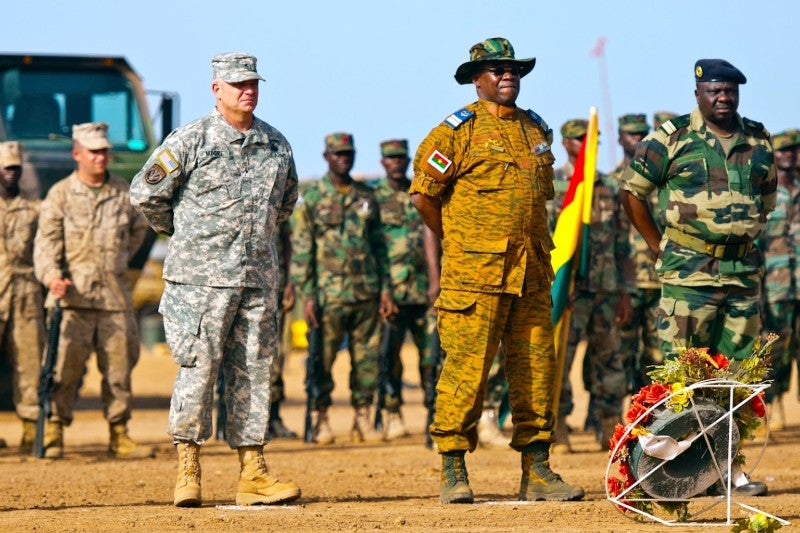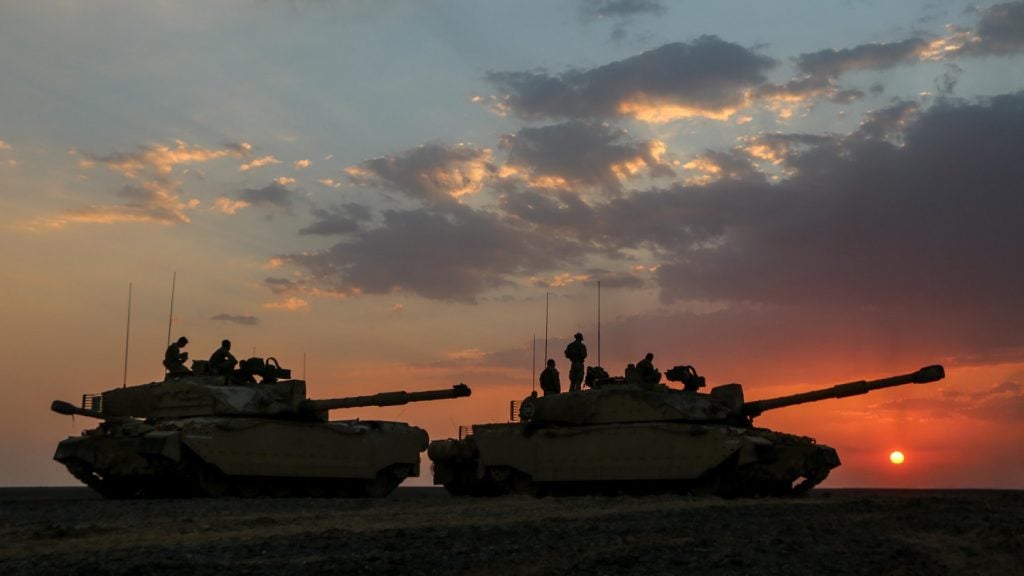
Total world military spending rose by 2.6% to reach $1,822bn (or $1.822tr) from 2017 to 2018, according to the latest figures from the Stockholm International Peace Research Institute’s (SIPRI) Military Expenditure Database.
This is the second consecutive year that world military spending has increased. Spending is now at the highest level since 1988, and 76% higher than the post-cold war lull in 1998.
Of the countries included in the database, the top five spenders were the US, China, Saudi Arabia, India, and France, which together accounted for 60% of world military spending in 2018. What are some of the key developments in world military spending in 2018?
(Note: In order to compare spending by year, SPIRI expresses all percentage changes in real terms – 2017 constant prices – which does not take into account inflation. E.g. US military spending in current 2018 prices was $649bn when taking into account inflation. However, for comparative purposes, an adjusted figure of $633bn is used.)
US defence spending rises for the first time since 2010
From 2017-2018 US military expenditure rose from $606bn to $649bn – or 4.6% in real terms ($633bn) – representing the first increase since 2010.
SIPRI Arms and Military Expenditure (AMEX) programme director Dr Aude Fleurant said: “The increase in US spending was driven by the implementation from 2017 of new arms procurement programmes under the Trump administration.”
How well do you really know your competitors?
Access the most comprehensive Company Profiles on the market, powered by GlobalData. Save hours of research. Gain competitive edge.

Thank you!
Your download email will arrive shortly
Not ready to buy yet? Download a free sample
We are confident about the unique quality of our Company Profiles. However, we want you to make the most beneficial decision for your business, so we offer a free sample that you can download by submitting the below form
By GlobalDataWhile the US is the world’s largest defence spender by some distance, the 2018 figure is still lower than throughout the period 2007-2013, and the US DoD’s spending is currently $136bn less than for the year 2010, which stood at $785bn – the highest on record.
Chinese spending increases for the 24th time
Meanwhile, China’s annual military spending increased again for the 24th consecutive year, from $228bn in 2017 to $250bn in 2018. Military spending in China has been on the rise since 1994 when it stood at just $24bn. For comparison, the US spent $476bn in 1994.
AMEX programme researcher Dr Nan Tian said: “In 2018, the USA and China accounted for half of the world’s military spending. The higher level of world military expenditure in 2018 is mainly the result of significant increases in spending by these two countries.
“Growth in Chinese military spending tracks the country’s overall economic growth. China has allocated 1.9% of its GDP to the military every year since 2013.”
India spent six times more than Pakistan
While both India and Pakistan’s military spending have generally risen since 1988, India’s military spending is currently around six times more than Pakistan’s military spending.
The Indian Government spent $66.5bn on defence in 2018 (current prices) compared to Pakistan’s $11.3bn. India’s military spending has seen some significant rises in recent years, particularly from 2015 to 2016 when it increased by $5.6m (or 10%), and again from 2016 to 2017 when it increased by another $4.3bn (or 4.6%).
AMEX programme senior research Siemon Wezeman said: “The tensions between countries in Asia as well as between China and the USA are major drivers for the continuing growth of military spending in the region.”
Between 2017 and 2018, Pakistan’s military spending increased by 10% in real terms.
NATO spending increases in line with Russia
Together, the 29 members of the North Atlantic Treaty Organization (NATO) spent $963bn on defence in 2018, making up more than half of world military spending, at 53%.
Key players in NATO increased their spending last year, possibly in response to the US’s calls on European members of NATO to increase their spending to meet the 3% of GDP threshold, and ease the burden on the US.
While major players such as Germany, France and the UK all increased their military spending from 2017 to 2018, some of the biggest proportionate rises happened in Central and Eastern Europe. The Polish Government, for example, increased its military spending by 8.9% (real terms) to $11.6bn, while Ukraine’s defence expenditure rose by 21% from $3.6bn to $4.8bn.
This was matched by significant increases in defence spending in Bulgaria, Latvia, Lithuania and Romania across 2018.
“The increases in Central and Eastern Europe are largely due to growing perceptions of a threat from Russia,” said AMEX programme senior researcher Pieter D Wezeman. “This is despite the fact that Russian military spending has fallen for the past two years.”
Russia had the sixth largest defence budget in 2018, at $61.4bn, although it has fallen since reaching a high of $82.6bn in 2016.
Middle East and African spending continue to fall
Total defence spending across the African continent fell by 8.4% on average in 2018, while total expenditure in the Middle East also fell by 1.9%, according to available data.
AMEX researcher Alexandra Kuimova attributes the decline mainly to Saudi Arabia’s falling expenditure. Kuimova told Army Technology: “There were several changes in the pattern of its [Saudi Arabia’s] military spending during 2009–18.
“After an initial increase of 72% after 2009 to a peak in 2015, spending dropped by 28% in 2016 as falling oil prices caused a decline in government revenue. There was a smaller increase of 11% in 2017, followed by another drop in 2018, of 6.5%.”
Saudia Arabia’s defence spending took the largest fall in real terms worldwide, decreasing by $4.6bn. Turkey’s military spending, on the other hand, rose from $17.8bn to $19bn from 2017 to 2018.
There were more defence cuts in Africa with some of the largest cuts occurring in Sudan (49% decrease), Angola (18% decrease), and Algeria (6.1% decrease).
“The decrease of 5.5% since 2017 in North African military spending was due to the decrease in Algeria’s military spending – the largest spender in North Africa and Africa as a whole,” said Kuimova.
“While in nominal terms Algeria’s military spending has remained the same since 2016, inflation meant that military expenditure fell in real terms by 6.1% in 2018. Military spending by Algeria’s neighbours was almost unchanged in 2018: Morocco spent $3.7bn (an increase of 0.1%) and Tunisia spent $844m (a decrease of 0.4%).”




